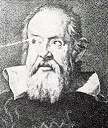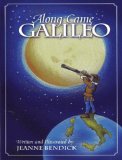How Galileo’s Telescope Created the Modern Science of Astronomy
Galileo challenged conventional views of the universe by observing by observing objects in the sky then applying the laws of mathematics and logic to what he saw. He turned the telescope into an important tool of understanding the universe we live in.
 Before Galileo turned his telescope toward the night sky the act of astronomy was pretty much an astrological pursuit where objects and motions of object in the sky were explained using ancient and archaic understandings of the universe and how it works.
Before Galileo turned his telescope toward the night sky the act of astronomy was pretty much an astrological pursuit where objects and motions of object in the sky were explained using ancient and archaic understandings of the universe and how it works.
But he didn’t just observe and note new objects in the sky. He applied scientific methods, mathematical laws, and logical thinking to what he observed and it is this cross discipline approach that created the modern science of observational astronomy.
Galileo is often thought of as inventing the telescope. He didn’t invent the telescope but he was the first person to turn one toward the night sky. And the observations he made created the new science of modern astronomy where telescopes are used to help us understand our universe, our place in it, and how it works.
 Galileo first heard about the mysterious telescope in 1609 and set out to make a copy for himself. This first telescope magnified images about three times. And over the course of a decade Galileo continued to make more telescopes and his most powerful one magnified images about ten times. This telescope enabled him to see things never before seen. And it enabled him to change our view of the universe and of the objects in the sky.
Galileo first heard about the mysterious telescope in 1609 and set out to make a copy for himself. This first telescope magnified images about three times. And over the course of a decade Galileo continued to make more telescopes and his most powerful one magnified images about ten times. This telescope enabled him to see things never before seen. And it enabled him to change our view of the universe and of the objects in the sky.
The first thing that Galileo turned his telescope to was the moon and by observing it over the course of many nights he made an important discovery. He saw that dark areas on the surface grew and shrunk depending on where the moon was in relation to the sun. From this he made the correct deduction that these dark areas were shadows cast by craters and mountains. He further explained with geometry that the height of the mountains and depth of the craters could be correctly calculated. This was an astonishingly important revelation in our view of the universe because it was previously believed that the moon was a smooth surfaced object.
Another extraordinary observation, and the most important, that Galileo made was the discovery of the four largest moons around Jupiter. They were previously unviewable but with his ten-power telescope he could see them. And after viewing them over the course of several nights he observed that they moved. With further careful observation and calculation he proved that they revolved around Jupiter. And this was a universe changing observation because it was previously believed that everything in the universe revolved around the Earth.
Galileo went on to make many telescopes and to make many other important observations in both the night and day sky including the discovery of spots on the sun and the discovery of the rings of Saturn. His observations in the sky spurred on many other telescope makers and astronomers to further explore the amazing and mysterious objects in the sky. But more importantly he also spurred on other astronomers to apply the laws and lessons of mathematics and logic to their observations in a quest to understand how the universe works.
This creation of the modern science of telescopic astronomy was clearly born in 1610 when he published his work called “Sidereus Nuncius” or the “Starry Messenger”. This work is still available to this day and is considered one of the most important written scientific works.
 Galileo’s Telescope Kit
Galileo’s Telescope Kit
- One kit
- Unique classroom project for young astronomers
- Create activities and lessons through the instruction guide
- Perfect art project for home or classroom
Along Came Galileo – One of the most important figures to come out of the awakening world of the Renaissance was Galileo Galelei. Often referred to as the “Archimedes of his time” Galileo was forever asking questions. Is it possible to measure heat? Is it possible to weigh air?
 Does the earth stand still or does it move? How fast do objects fall to the earth? His questions led to some of the most important answers of the scientific world and to his contributions to astronomy, physics, and mathematics. Galileo also advanced the astronomical telescope and invented the compound microscope. He measured the rotation of the sun, invented the thermometer, a geometrical compass and the pendulum clock. He was a man of faith, a lover of art and an accomplished artist. He played the lute and enjoyed working in his garden. He was the first to see, through the lens of the telescope, the wonders of our galaxy sights that moved him to profound gratitude to God. He was so ahead of his time that his discoveries caused him to be the object of persecution and injustice. Through her whimsical illustrations and her bright engaging text Bendick has provided the middle reader with Galileo’s inspiring story.
Does the earth stand still or does it move? How fast do objects fall to the earth? His questions led to some of the most important answers of the scientific world and to his contributions to astronomy, physics, and mathematics. Galileo also advanced the astronomical telescope and invented the compound microscope. He measured the rotation of the sun, invented the thermometer, a geometrical compass and the pendulum clock. He was a man of faith, a lover of art and an accomplished artist. He played the lute and enjoyed working in his garden. He was the first to see, through the lens of the telescope, the wonders of our galaxy sights that moved him to profound gratitude to God. He was so ahead of his time that his discoveries caused him to be the object of persecution and injustice. Through her whimsical illustrations and her bright engaging text Bendick has provided the middle reader with Galileo’s inspiring story.
